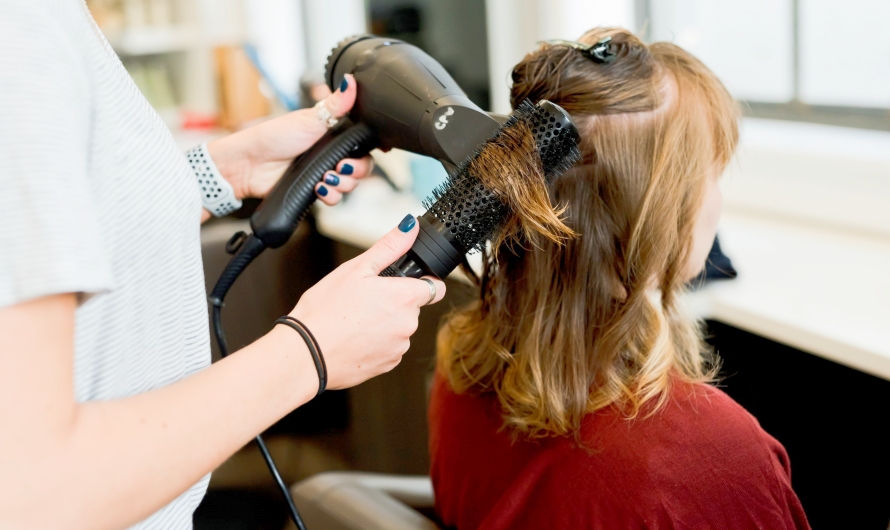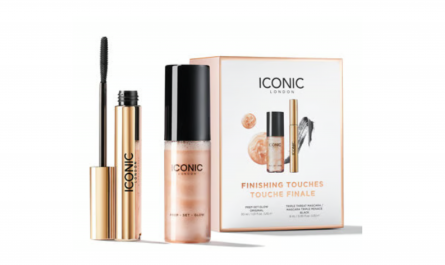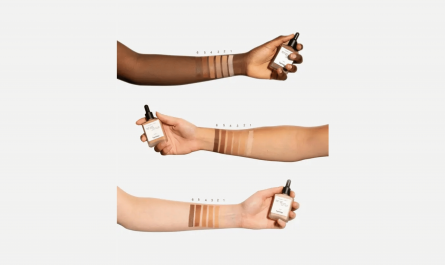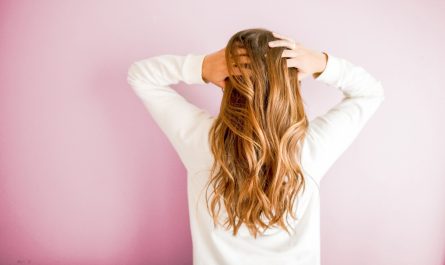Heat tools are devices that use heat to change the shape, texture, or appearance of your hair. They include flat irons, curling irons, hair dryers, hot rollers, and more. Many people use heat tools to style their hair in different ways, such as straightening, curling, waving, crimping, or adding volume.
However, using heat tools on your hair can also cause some problems. Heat can damage the cuticle layer of your hair, which protects it from moisture loss and environmental damage. This can result in dryness, brittleness, breakage, split ends, frizz, and color fading.
So how can you style your hair with heat tools and protect it from heat damage? In this article, we will show you the best heat tools for different hair types and styles, and the best tips and tricks for using them safely and effectively.
The Best Heat Tools for Different Hair Types and Styles
Not all heat tools are suitable for all hair types and styles. You need to choose the right heat tool that can achieve your desired look without damaging your hair. Here are some of the best heat tools for different hair types and styles:
For Straight or Sleek Hair
If you want to make your hair straight or sleek, you can use these heat tools:
Flat Irons
Flat irons are devices that have two heated plates that clamp down on your hair and press it flat. They can make your hair smooth,straight,and shiny.
They can also create flips, bends, or waves on your hair ends if you twist or angle them. Flat irons come in different sizes, shapes, and materials. You should choose a flat iron that has ceramic, titanium, or tourmaline plates, as they can distribute heat evenly and reduce frizz and damage. You should also choose a flat iron that has adjustable temperature settings, as different hair types and conditions require different levels of heat.
Hot Combs
Hot combs are devices that have heated teeth that comb through your hair and straighten it. They can make your hair sleek, smooth, and frizz-free. They can also reach the roots and edges of your hair better than flat irons. Hot combs are especially useful for people with coarse, curly, or kinky hair. Hot combs come in different types, such as electric, stove-top, or cordless. You should choose a hot comb that has ceramic or metal teeth, as they can glide through your hair smoothly and prevent snagging and pulling. You should also choose a hot comb that has adjustable temperature settings, as different hair types and conditions require different levels of heat.
Hair Dryers
Hair dryers are devices that blow hot air on your hair and dry it. They can also make your hair straight or sleek if you use them with a round brush or a paddle brush. They can add volume, lift, and shine to your hair. Hair dryers come in different sizes, shapes, and features. You should choose a hair dryer that has ceramic, ionic, or tourmaline technology, as they can reduce drying time and frizz and enhance shine. You should also choose a hair dryer that has multiple speed and heat settings, as different hair types and conditions require different levels of air flow and heat.
For Curly or Wavy Hair
If you want to make your hair curly or wavy, you can use these heat tools:
Curling Irons
Curling irons are devices that have a heated barrel that wraps around your hair and curls it. They can make your hair curly,
wavy,
or spiral.
They can also create
different sizes
and shapes
of curls
or waves
depending on the diameter
and shape
of the barrel.
Curling irons come in different sizes,
shapes,
and materials.
You should choose a curling iron
that has ceramic,
titanium,
or tourmaline
barrel,
as they can distribute heat evenly
and reduce frizz
and damage.
You should also choose a curling iron
that has adjustable temperature settings,
as different hair types
and conditions
require different levels of heat.
Curling Wands
Curling wands are devices that have a heated rod that wraps around your hair and curls it. They can make your hair curly,
wavy,
or tousled.
They can also create
more natural-looking
and varied
curls
or waves
than curling irons,
as they do not have a clamp
that holds your hair in place.
Curling wands come in different sizes,
shapes,
and materials.
You should choose a curling wand
that has ceramic,
titanium,
or tourmaline
rod,
as they can distribute heat evenly
and reduce frizz
and damage.
You should also choose a curling wand
that has adjustable temperature settings,
as different hair types
and conditions
require different levels of heat.
Diffusers
Diffusers are attachments that fit on the nozzle of your hair dryer and diffuse the air flow on your hair. They can make your hair curly,
wavy,
or voluminous.
They can also enhance
the natural curl
or wave pattern
of your hair
and reduce frizz
and shrinkage.
Diffusers come in different sizes,
shapes,
and features.
You should choose a diffuser
that has large prongs
or fingers
that can lift and separate your curls
or waves.
You should also choose a diffuser
that has multiple air vents
that can distribute air evenly
and gently on your hair.
For Voluminous or Textured Hair
If you want to make your hair voluminous or textured, you can use these heat tools:
Hot Rollers
Hot rollers are devices that have heated cylinders that roll up your hair and set it in curls or waves. They can make your hair voluminous,
bouncy,
or glamorous.
They can also create
different sizes
and shapes of curls or waves depending on the diameter and shape of the cylinders. Hot rollers come in different sizes, shapes, and materials. You should choose hot rollers that have ceramic, ionic, or tourmaline technology, as they can reduce drying time and frizz and enhance shine. You should also choose hot rollers that have variable temperature settings, as different hair types and conditions require different levels of heat.
Crimping Irons
Crimping irons are devices that have two heated plates that press down on your hair and create zigzag patterns on it. They can make your hair textured,
edgy,
or funky.
They can also add
volume,
dimension,
and contrast
to your hair.
Crimping irons come in different sizes,
shapes,
and materials.
You should choose a crimping iron
that has ceramic,
titanium,
or tourmaline
plates,
as they can distribute heat evenly
and reduce frizz
and damage.
You should also choose a crimping iron
that has adjustable temperature settings,
as different hair types
and conditions
require different levels of heat.
Hot Brushes
Hot brushes are devices that have heated bristles that brush through your hair and style it. They can make your hair voluminous, smooth, or wavy. They can also create flips, bends, or curls on your hair ends if you twist or angle them. Hot brushes come in different sizes, shapes, and materials. You should choose a hot brush that has ceramic, ionic, or tourmaline technology, as they can reduce drying time and frizz and enhance shine. You should also choose a hot brush that has multiple speed and heat settings, as different hair types and conditions require different levels of air flow and heat.
The Best Tips and Tricks for Styling Your Hair with Heat Tools and Protecting It from Heat Damage
To get the best results from your heat tools and avoid damaging your hair, you need to follow some tips and tricks when styling your hair with heat tools. Here are some of the best tips and tricks for styling your hair with heat tools and protecting it from heat damage:
Choose the right heat tool for your hair type and style
As we mentioned before, not all heat tools are suitable for all hair types and styles. You need to choose the right heat tool that can achieve your desired look without damaging your hair. For example,
- If you have fine or thin hair: You should choose a heat tool that has a low to medium temperature setting (below 200°C or 392°F) and a small to medium size (below 1 inch or 2.5 cm) to avoid overheating or overloading your hair with too much heat or product.
- If you have thick or coarse hair: You should choose a heat tool that has a high temperature setting (above 200°C or 392°F) and a large size (above 1 inch or 2.5 cm) to provide enough heat and coverage to your hair to smooth it out and tame it.
- If you have curly or wavy hair: You should choose a heat tool that has a medium to high temperature setting (between 180°C to 230°C or 356°F to 446°F) and a tapered or oval shape to match the shape of your curls or waves and enhance them.
- If you have color-treated or bleached hair: You should choose a heat tool that has a low to medium temperature setting (below 200°C or 392°F) and a ceramic, titanium, or tourmaline material to protect your color from fading or dulling due to heat exposure.
Use a heat protectant product before styling your hair with heat tools
A heat protectant product is a product that you apply to your hair before using heat tools to shield it from the high temperatures and prevent damage. It usually comes in the form of a spray, cream, serum, or oil. It can also provide other benefits such as hydration, shine, smoothness, or hold. You should use a heat protectant product every time you style your hair with heat tools to keep it healthy and beautiful. Here are some steps on how to use a heat protectant product:
- Step 1: Wash and condition your hair as usual.
- Step 2: Towel-dry your hair gently until it is damp but not dripping wet.
- Step 3: Apply a generous amount of heat protectant product to your hair from roots to ends. You can use more product if you have longer or thicker hair.
- Step 4: Comb through your hair with a wide-toothed comb to distribute the product evenly.
- Step 5: Proceed to style your hair with your chosen heat tool.
Adjust the temperature and speed settings of your heat tools according to your hair condition and desired result
As we mentioned before, different hair types and conditions require different levels of heat when using heat tools. You need to adjust the temperature and speed settings of your heat tools according to your hair condition and desired result. For example,
- If you have fine or thin hair: You should use a low to medium temperature setting (below 200°C or 392°F) and a low to medium speed setting (below 80 km/h or 50 mph) to avoid overheating or overloading your hair with too much heat or air flow. You should also use a small to medium size heat tool (below 1 inch or 2.5 cm) to create more volume, body, and thickness for your hair.
- If you have thick or coarse hair: You should use a high temperature setting (above 200°C or 392°F) and a high speed setting (above 80 km/h or 50 mph) to provide enough heat and coverage to your hair to smooth it out and tame it. You should also use a large size heat tool (above 1 inch or 2.5 cm) to create more smoothness, softness, and shine for your hair.
- If you have curly or wavy hair: You should use a medium to high temperature setting (between 180°C to 230°C or 356°F to 446°F) and a medium to high speed setting (between 60 km/h to 100 km/h or 37 mph to 62 mph) to retain the moisture, elasticity, and shape of your curls or waves. You should also use a tapered or oval shape heat tool to match the shape of your curls or waves and enhance them.
- If you have color-treated or bleached hair: You should use a low to medium temperature setting (below 200°C or 392°F) and a low to medium speed setting (below 80 km/h or 50 mph) to protect your color from fading or dulling due to heat exposure. You should also use a ceramic, titanium, or tourmaline material heat tool to protect your color from fading or dulling due to heat exposure.
Use the right technique and timing when styling your hair with heat tools
The way you use your heat tools and the time you spend on your hair can also affect the outcome and the damage of your hair. You need to use the right technique and timing when styling your hair with heat tools. For example,
- When using a flat iron: You should start from the roots and work your way down to the ends of your hair. You should glide the flat iron slowly and smoothly through your hair without stopping or pulling. You should avoid going over the same section of hair more than once or twice. You should also avoid clamping the flat iron too tightly or too loosely on your hair.
- When using a curling iron or wand: You should start from the mid-lengths and work your way up to the roots of your hair. You should wrap your hair around the barrel without overlapping or twisting. You should hold your hair on the barrel for a few seconds and then release it gently. You should avoid holding your hair on the barrel for too long or too short. You should also avoid wrapping your hair too tightly or too loosely around the barrel.
- When using a hair dryer: You should start from the roots and work your way down to the ends of your hair. You should point the nozzle of the hair dryer downwards and follow it with a brush. You should move the hair dryer quickly and evenly over your hair without staying on one spot for too long. You should avoid pointing the nozzle of the hair dryer upwards or sideways. You should also avoid blowing hot air directly on your scalp.
Avoid overusing or misusing heat tools on your hair
Even if you use the right heat tools, products, settings, techniques, and timings, you can still damage your hair if you overuse or misuse heat tools on your hair. You need to avoid overusing or misusing heat tools on your hair. For example,
- You should limit the frequency of using heat tools on your hair: You should not use heat tools on your hair every day or more than once a day. You should give your hair a break from heat styling at least once a week or more. You should also alternate between different types of heat tools to avoid exposing your hair to the same kind of heat repeatedly.
- You should not use heat tools on wet or damp hair: You should always dry your hair completely before using heat tools on it. Using heat tools on wet or damp hair can cause steam damage, which can make your hair brittle, porous, and prone to breakage.
- You should not use heat tools on dirty or oily hair: You should always wash and condition
your
hair before using
heat tools
on it.
Using
heat tools
on dirty
or oily
hair can cause
the dirt
or oil
to burn
and stick
to your
hair,
which can make
your
hair dull,
greasy,
and smelly.
Conclusion
Heat tools are great devices that can help you style your hair in different ways, such as straightening, curling, waving, crimping, or adding volume. However, using heat tools on your hair can also cause some problems, such as dryness, brittleness, breakage, split ends, frizz, and color fading.
To style your hair with heat tools and protect it from heat damage, you need to follow some tips and tricks, such as choosing the right heat tool for your hair type and style, using a heat protectant product before styling your hair with heat tools, adjusting the temperature and speed settings of your heat tools according to your hair condition and desired result, using the right technique and timing when styling your hair with heat tools, and avoiding overusing or misusing heat tools on your hair.
We hope that this article has helped you learn more about how to style your hair with heat tools and protect it from heat damage. We also hope that you have found some products that you can try for yourself.
If you have any questions, comments, or suggestions, please feel free to leave them below. We would love to hear from you.
Thank you for reading and happy styling!
FAQs
Q: How do I know if my hair is damaged by heat?
A: Some signs that indicate that your hair is damaged by heat are:
- Your hair looks dull, lifeless, and lackluster.
- Your hair feels rough, coarse, and brittle.
- Your hair breaks easily and has split ends.
- Your hair is hard to comb, style, or manage.
- Your hair has lost its natural curl or wave pattern.
- Your hair has lost its color vibrancy or has become brassy.
Q: How can I repair my hair if it is damaged by heat?
A: Some ways that can help you repair your hair if it is damaged by heat are:
- Cut off the damaged ends of your hair regularly to prevent further damage and promote healthy growth.
- Use a deep conditioning mask or treatment once a week or more to restore the moisture, shine, and strength of your hair.
- Use a protein treatment once a month or more to rebuild the keratin and bonds of your hair.
- Use a color-safe shampoo and conditioner to preserve the color of your hair and prevent fading or dulling.
- Use natural oils or serums to seal the cuticles of your hair and prevent moisture loss and environmental damage.
Q: How can I prevent my hair from getting damaged by heat in the future?
A: Some ways that can help you prevent your hair from getting damaged by heat in the future are:
- Limit the frequency of using heat tools on your hair to once a week or less.
- Always use a heat protectant product before styling your hair with heat tools.
- Adjust the temperature and speed settings of your heat tools according to your hair type and condition.
- Use the right technique and timing when styling your hair with heat tools.
- Avoid using heat tools on wet or damp hair or on dirty or oily hair.
Q: Can I use other methods to style my hair without using heat tools?
A: Yes, you can use other methods to style your hair without using heat tools. Some of them are:
- Braiding: You can braid your hair when it is damp or dry and leave it overnight or for a few hours. You can then undo the braids and enjoy the waves or curls that they create. You can also experiment with different types of braids, such as French braids, Dutch braids, fishtail braids, or cornrows.
- Twisting: You can twist your hair when it is damp or dry and secure it with pins or clips. You can then leave it overnight or for a few hours. You can then untwist your hair and enjoy the waves or curls that they create. You can also experiment with different sizes and shapes of twists, such as rope twists, flat twists, or Bantu knots.
- Rolling: You can roll your hair when it is damp or dry and secure it with rollers or pins. You can then leave it overnight or for a few hours. You can then unroll your
hair
and enjoy
the waves
or curls
that they create.
You can also experiment
with different sizes
and shapes
of rollers,
such as foam rollers,
velcro rollers,
or flexi rods.
Q: What are some of the best brands or products for heat tools and heat protectants?
A: Some of the best brands or products for heat tools and heat protectants are:
- For flat irons: GHD Platinum+ Styler, CHI Original Ceramic Hairstyling Iron, BaBylissPRO Nano Titanium Ultra-Thin Straightening Iron
- For curling irons or wands: T3 Whirl Trio Interchangeable Styling Wand Set, Hot Tools Professional 24K Gold Curling Iron/Wand, Remington Pro Pearl Ceramic Curling Wand
- For hair dryers: Dyson Supersonic Hair Dryer, Revlon One-Step Hair Dryer And Volumizer Hot Air Brush, Conair 1875 Watt Ionic Ceramic Hair Dryer
- For hot rollers: T3 Volumizing Hot Rollers Luxe, Remington Ionic Conditioning Hair Setter, Conair Xtreme Instant Heat Jumbo And Super Jumbo Hot Rollers
- For crimping irons: Bed Head Wave Artist Deep Waver, Gold N Hot Professional Ceramic Crimping Iron, Revlon Perfect Heat Ceramic Crimper
- For hot brushes: Drybar The Brush Crush Heated Straightening Brush, Amika Polished Perfection Straightening Brush, Revlon XL Hair Straightening Heated Styling Brush
- For heat protectants: HSI Professional Argan Oil Heat Protector, Tresemme Thermal Creations Heat Tamer Spray, Bumble and Bumble Hairdresser’s Invisible Oil Heat/UV Protective Primer




